
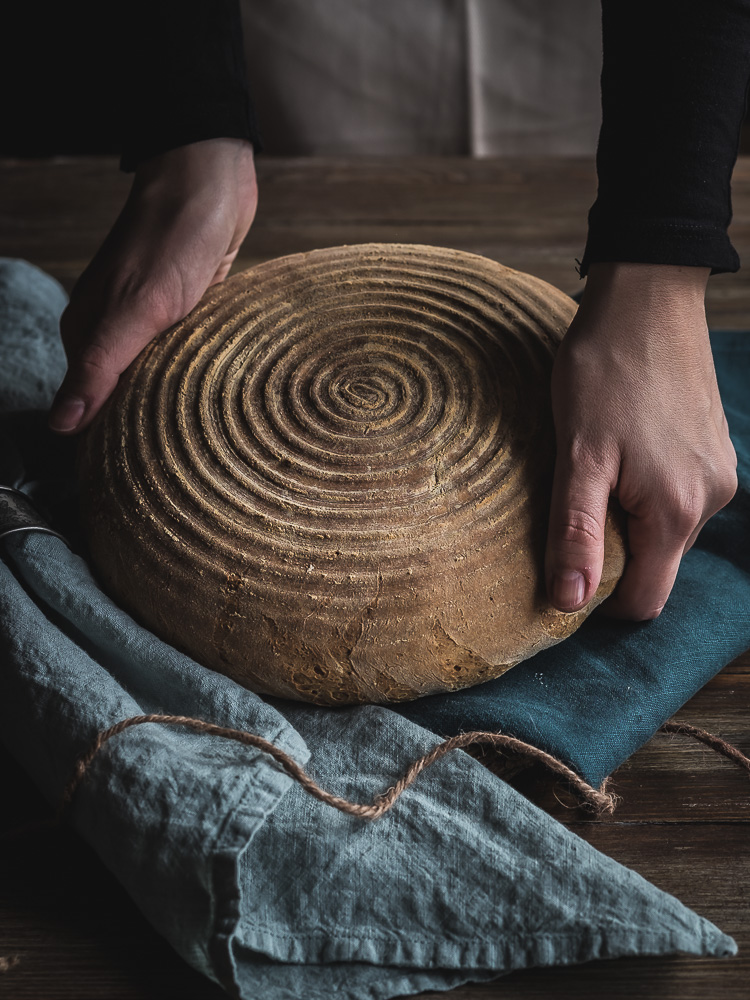
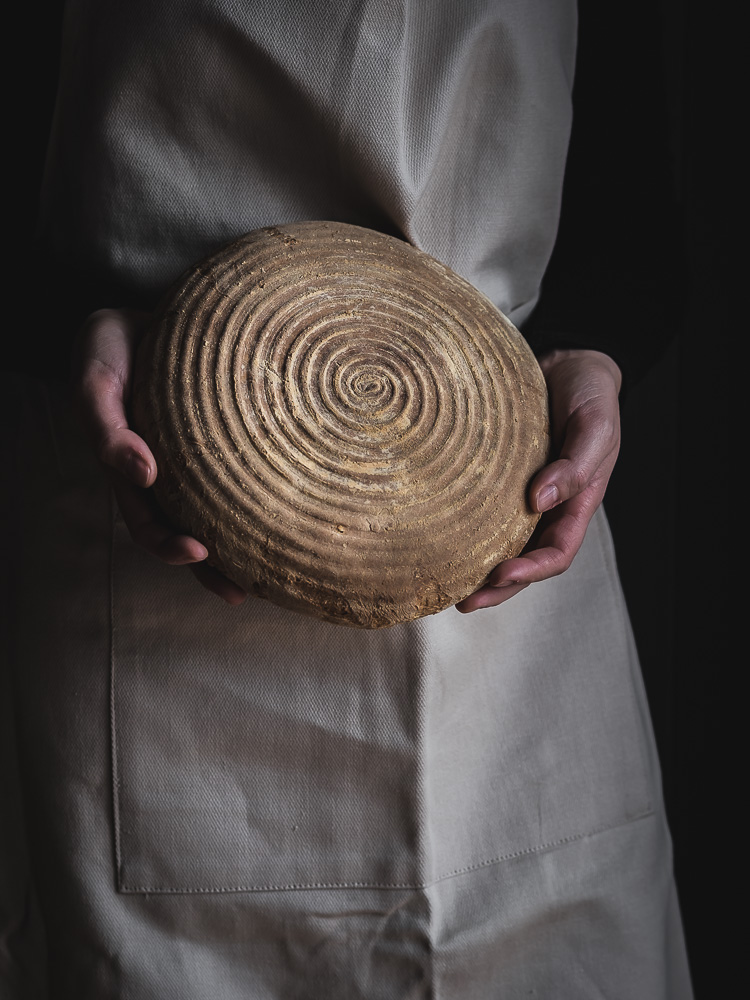
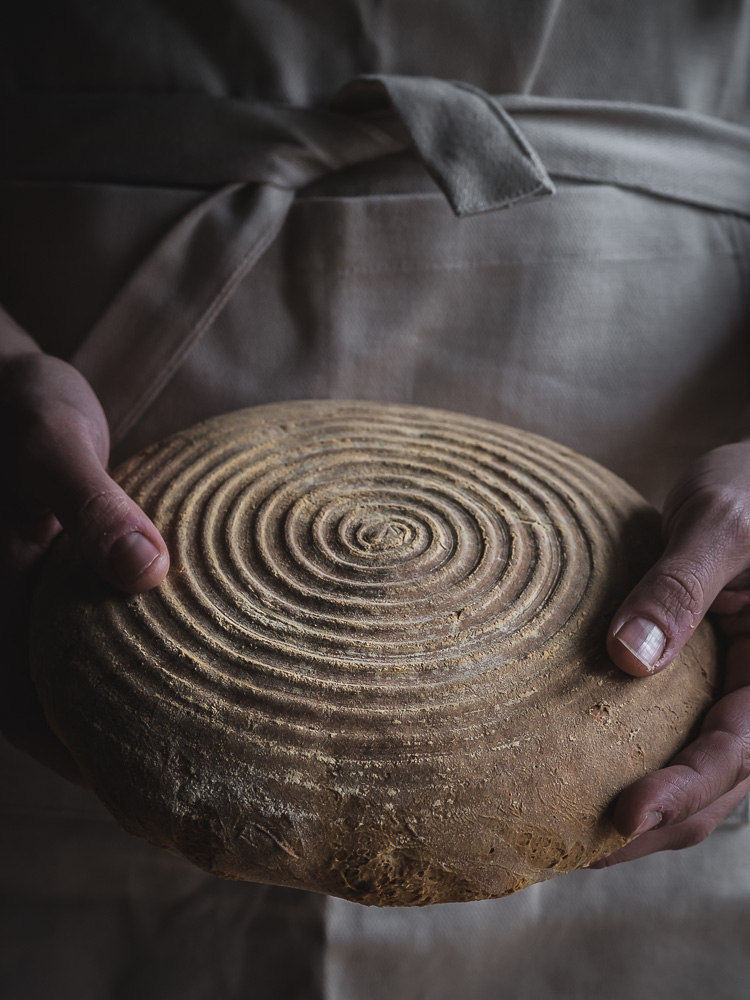
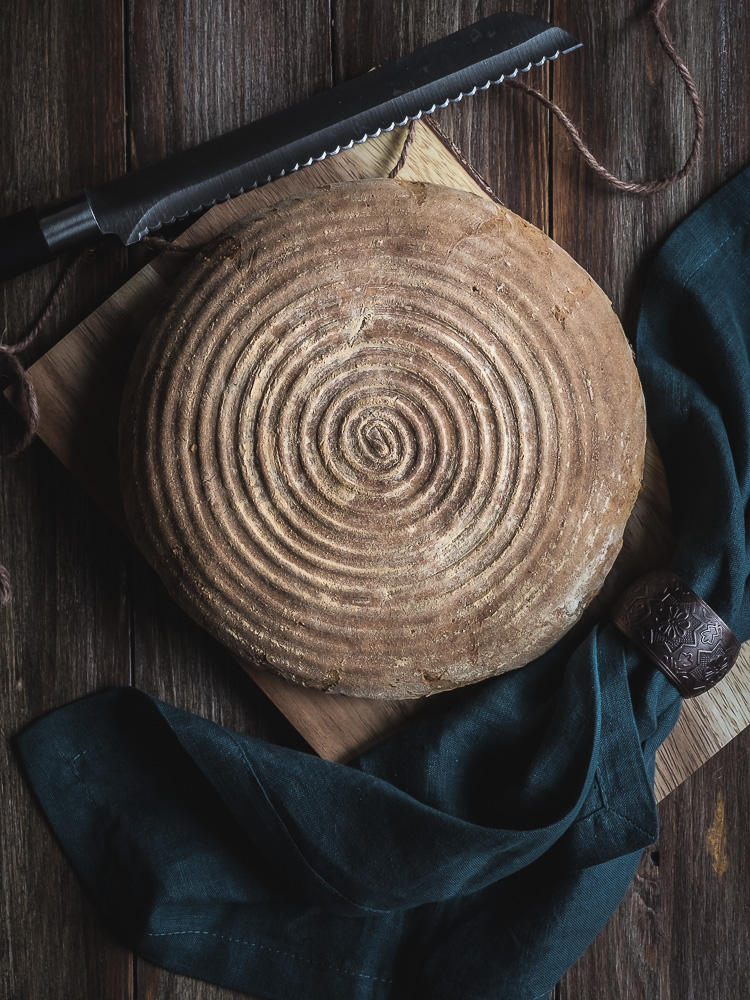 This is officially my first “not-sweet recipe”. Well, we are still talking of “baking” nevertheless, and who loves baking cakes and pies usually also loves baking other things such as bread, pizza and focaccia. I also finally bought a proofing basket that provides a beautiful shape and pattern and I am loving it! Of course, you can also make the bread using this recipe even if you do not have one of these.
This is officially my first “not-sweet recipe”. Well, we are still talking of “baking” nevertheless, and who loves baking cakes and pies usually also loves baking other things such as bread, pizza and focaccia. I also finally bought a proofing basket that provides a beautiful shape and pattern and I am loving it! Of course, you can also make the bread using this recipe even if you do not have one of these.
I really like to try new ingredients and, for this reason, I made this bread using Kamut and spelt flour, and the result is absolutely amazing, it tasted so good, but you can also substitute them with bread flour if you prefere a more traditional taste. In any case let me know if you try this recipe!
-ITALIAN VERSION-
PANE DI KAMUT E FARRO FATTO IN CASA
Questa è ufficialmente la mia prima ricetta non-dolce del blog. Parliamo comunque di un prodotto da forno, di solito infatti chi come me ama fare le torte ama anche preparare focacce, pane e pizze. Dopo anni, e sottolineo anni, di indecisione ho finalmente comprato un cestino per lievitazione, e mi chiedo come mai ho aspettato così tanto. Si tratta di cestini di vimini disponibili in varie forme e misure in cui si pone il pane a lievitare e non solo permettono al pane di “respirare” ma donano anche alla pagnotta un aspetto caratteristico, come potete vedere nelle mie foto. Non sono ovviamente obbligatori, solo un accessorio in più, e la ricetta va benissimo anche per chi non li possiede. Mi piace moltissimo provare ingredienti nuovi e diversi e, in generale, l’integrale mi è sempre piaciuto per cui vi propongo la ricetta di un pane con una parte di farina bianca e una parte di un mix di Kamut e farro. Vi assicuro che il sapore sarà veramente speciale!
300 g acqua tiepida
1 cucchiaino i zucchero
25 g di lievito di birra fresco (oppure una bustina di lievito di birra disidratato)
300 grammi di farina bianca tipo “00” (o anche tipo “0” se preferite)
150 g farina di Kamut
150 g farina di farro
1 cucchiaino di sale
2 cucchiai di olio EVO
Procedimento
-
Mescolare con una forchetta (o in un mixer) il lievito con 100 g di acqua tiepida ed aggiungere lo zucchero.
-
Trasferire il mix di lievito in una planetaria con il gancio (oppure nel boccale del Bimby® per chi lo possiede), e versarci sopra la farina.
-
Unire quindi il sale, i 2 cucchiai d’olio e la restante acqua, sempre tiepida.
-
Attivare la planetaria e lavorare per 10 minuti velocità 2 (bassa) fino ad ottenere un impasto liscio ed elastico, ma non appiccicoso.
-
Per chi decide di farlo a mano lavorare per circa 15 minuti. Per chi ha il Bimby® impastare 3 minuti modalità spiga.
-
Terminata la fase precedente, formare una palla con l’impasto e sistemarla in una ciotola coperta con un panno umido oppure con della pellicola trasparente.
-
Far lievitare fino al raddoppio, circa 1 ora. Deve lievitare in un luogo riparato e tiepido come vicino a un calorifero se siete in inverno, oppure nel forno spento con la sola lampadina accesa.
-
Trascorso il tempo di lievitazione, riprendere il panetto e lavorarlo leggermente su una superficie infarinata e formare una pagnotta della forma preferita, oppure due pagnotte più piccole.
-
Adagiare la pagnotta su una teglia rivestita di carta da forno e lasciar lievitare per un’altra ora e mezza all’interno del forno spento. Se come me possedete un cestino per lievitazione ponete la pagnotta nel cestino con il lato della chiusura dell’impasto rivolto verso l’alto.
-
Una volta terminata la seconda lievitazione, togliere dal cestino se l’avete utilizzato, infornare e cuocere a 200°C per circa 50 minuti
-
Sfornare, sistemare su una gratella e lasciar raffreddare.
HOME MADE KAMUT & SPELT BREAD
Ingredients
- 300 g lukewarm water
- 1 tsp caster sugar
- 25 g fresh yeast (or 7 g dry active yeast)
- 300 g bread flour
- 150 g Kamut flour
- 150 g spelt flour
- 1 tsp salt
- 2 tbsp olive oil, extra virgin
Instructions
1
Mix the yeast with 100 g of lukewarm water and whisk it with a fork (or in a stand mixer), then add the sugar.
2
Add flour, salt, 2 tablespoons of oil and the remaining water (always lukewarm).
3
With the hook attachment of the stand mixer knead the dough for about 10 minutes, at a medium-low speed.
4
If you got a Thermomix® (as I have) use the kneading dough function for 3 minutes.
5
You can also do this by hand and in that case, you would have to knead the dough for about 15 minutes.
6
Once you have a smooth and elastic (but not sticky) dough remove it from the mixer, form a ball and place it in a bowl covered with clingfilm.
7
Let rise in a warm place until doubled, about 1 hour. You can let it rise into the oven with only the light on.
8
Punch down the dough with your fist, turn onto a lightly floured surface and shape it into a loaf. You can also make two loaves if you like to.
9
If you have a proofing basket (banneton) place the dough into the basket so that the top of the dough is on the bottom of the basket and the underside is visible.
10
Cover and let rise again for about 1-1/2 hours.
11
Preheat the oven and bake at 200° until golden brown for about 50 minutes.
12
Remove from the oven and let it cool on a wire rack.
Notes
You can also use wholemeal flour instead of Kamut and spelt flour.
HOME MADE KAMUT & SPELT BREAD
Ingredients
- 300 g lukewarm water
- 1 tsp caster sugar
- 25 g fresh yeast (or 7 g dry active yeast)
- 300 g bread flour
- 150 g Kamut flour
- 150 g spelt flour
- 1 tsp salt
- 2 tbsp olive oil, extra virgin
Instructions
Mix the yeast with 100 g of lukewarm water and whisk it with a fork (or in a stand mixer), then add the sugar.
Add flour, salt, 2 tablespoons of oil and the remaining water (always lukewarm).
With the hook attachment of the stand mixer knead the dough for about 10 minutes, at a medium-low speed.
If you got a Thermomix® (as I have) use the kneading dough function for 3 minutes.
You can also do this by hand and in that case, you would have to knead the dough for about 15 minutes.
Once you have a smooth and elastic (but not sticky) dough remove it from the mixer, form a ball and place it in a bowl covered with clingfilm.
Let rise in a warm place until doubled, about 1 hour. You can let it rise into the oven with only the light on.
Punch down the dough with your fist, turn onto a lightly floured surface and shape it into a loaf. You can also make two loaves if you like to.
If you have a proofing basket (banneton) place the dough into the basket so that the top of the dough is on the bottom of the basket and the underside is visible.
Cover and let rise again for about 1-1/2 hours.
Preheat the oven and bake at 200° until golden brown for about 50 minutes.
Remove from the oven and let it cool on a wire rack.
Notes
You can also use wholemeal flour instead of Kamut and spelt flour.


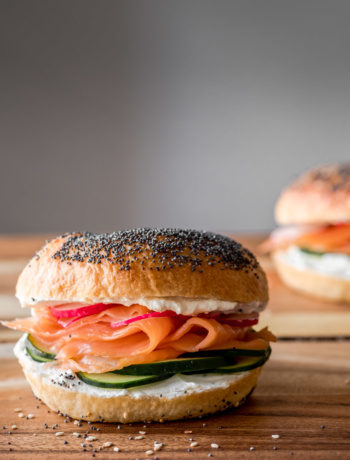
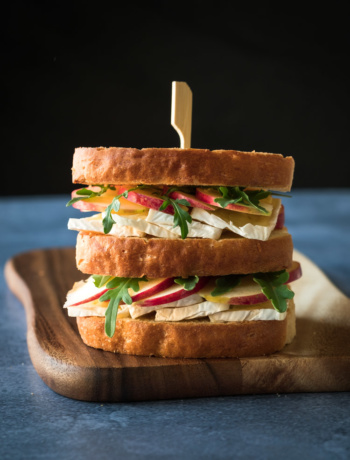
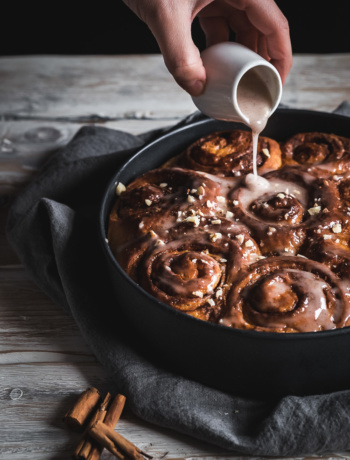
No Comments